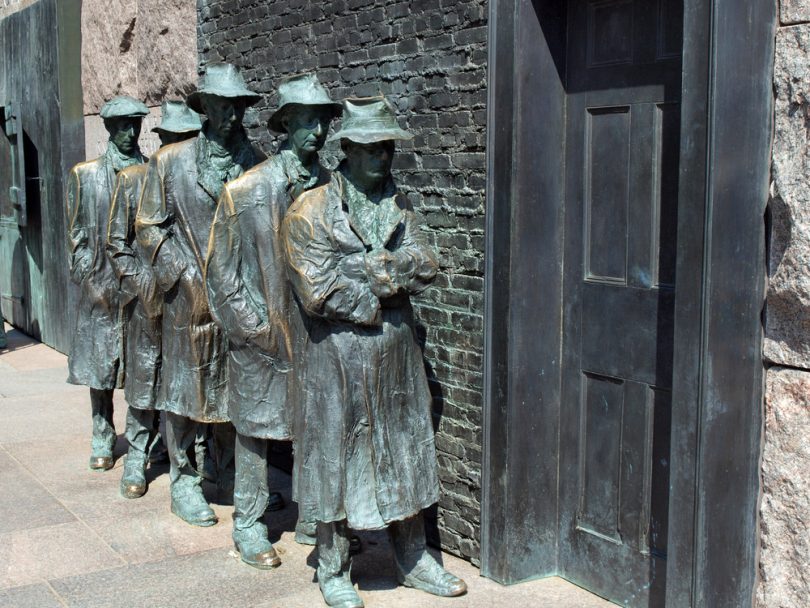No one knows better than your grandparents how to stretch a dollar — after all, they lived through the hardest times the country has ever known. The Great Depression was an entire decade of economic hard times. Millions of people were out of work and didn’t have enough to eat. This meant that families were often separated as members traveled in search of even a temporary job, and kids often left school to help support their parents.
Anyone who grew up during the Depression learned the hard way how to stretch a dollar. Have you ever taken a look at your grandparents’ pantry? If you open up a kitchen drawer, you might notice bits of string or a stack of used envelopes that once held junk mail. Hanging on to useful things like this is a hard-to-break habit leftover from a time when even the most basic supplies were hard to come by.
Your grandparents are probably super savers — elite-level frugality experts who never let anything go to waste. You can learn a lot from their old-fashioned frugality. Try these tips to put Depression-era skills into practice to stretch your 21st century dollars.
Reuse Kitchen Containers
When you hit the grocery store, part of every food dollar you spend pays for the packaging. Instead of tossing your old jars and cans into the recycling bin, start thinking of them as free organizers and food storage containers. Your grandfather probably used old coffee cans in his workshop to hold nails or tools, while your grandmother likely reused clear jars to hold leftovers or dry ingredients. Play your cards right, and you’ll never have to buy a container again.
Modern Upgrade: If you’re crafty, you can paint your containers to customize them. For a handy kitchen spice rack, mount a magnetic knife rack beneath a cabinet to “hang” jars for spices or other supplies.
Save Your Scrap Paper
We live in a world of cheap, abundant paper today, but it used to be a much more expensive commodity. Junk mail wasn’t a thing in the 30s, and odds are good that your great grandparents held onto any scrap of paper with a spare space to jot down notes — and kids would love a place to draw or doodle if they could find one.
Modern Upgrade: Use an inbox/outbox filing tray to hold paper that’s already been printed on one side. If you need to make a print something that doesn’t require perfect looks, print on the clean sides to get the full use out of your paper. One-sided prints also make a great supply of scrap paper for kids to draw on or use as scratch paper for homework.
Homemade Holiday Gifts
With no spare money for specialty items, Christmas during the Depression was all about homemade gifts. Maybe you saved up for something small but really special, or maybe you horded the good sugar for to bake a special treat to share. It was also common to go through the rag bag for scraps to use to sew something useful, or perhaps to find pieces of scrap wood to build a small toy.
Modern Upgrade: Try declaring a homemade holiday this year, in which participants make instead of buy their gifts. It’s a great way to cut back the holiday budget and to remind yourself of what’s really important by crafting something with love.
Can It
With limited grocery budgets, lots of families grew — or foraged for — their own fruits and vegetables during hard times. This was a great way to eat cheaply in the summer, but what about once the frost came? Smart people spent their time preserving the harvest for winter. That means lots of canning and pickling to make sure you have food throughout the year.
Modern Upgrade: When fresh berries or apples are in season, they’ll be cheaper at both farmers market and the grocery store. Invest in extra and learn to jar your own applesauce or jam. You can also blanch and freeze fresh vegetables for an even easier way to preserve the harvest.
Fix It
You know how people are always saying they don’t make things like they used to? That may be the case, but it’s also true that we’re far more likely to give up one something and buy a new version rather than repair it. Your grandparents had some solid skills when it came to mending clothing or repairing a leaky faucet — they had to. Keeping your possessions in good working order was crucial when you couldn’t afford to replace them.
Modern Upgrade: Challenge yourself to learn some new skills, whether it’s basic sewing, carpentry or auto repair. You can get started by heading to the library for some how-to books or looking online for community college courses or adult home ec classes to learn how to keep your household running when something breaks down.
Free Fun
Kids during the Great Depression didn’t have iPads or allowances, so they figured out how to make their own fun. It doesn’t take much to start an outdoor game with a group of friends or enjoy a good book from the local library. You can take a cue from these resourceful youngsters by finding ways to entertain yourself for less at free community events, too.
Modern Upgrade: Instead of eating out with your friends, take turns hosting a themed potluck. When everyone pitches in to bring a dish or drink, you save money while still having all the fun. This is a great way to cut a big chunk out of your entertainment budget each month.
There’s a lot you can learn from the creative ways people in the Depression scraped out a living when they had to. Even if you don’t need to save scrap paper or mend your favorite shirt, learning to be more resourceful and frugal will help your bottom line. What old-time frugality tricks do you use to make ends meet?




